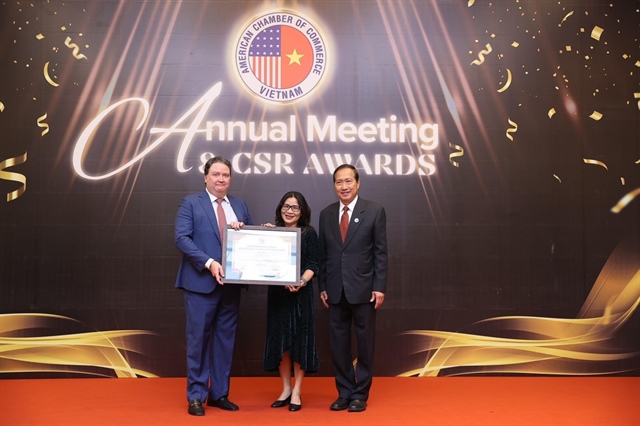State Bank urged to remove deposit ceiling interest rate mechanism
State Bank urged to remove deposit ceiling interest rate mechanism
The interest rates will surely not decrease. If the biggest problem of 2011 was the weak liquidity, the problem of 2012 and 2013 is the bad debt.

“It is impossible to lower the interest rates further. And the State Bank should think about whether it should maintain the current ceiling deposit interest rate policy,” Nghia said.
The economist has warned that if the ceiling interest rate scheme is maintained, this would put the commercial banks, which are now mobilizing capital at higher interest rates, in high legal risks, and would reduce the transparency of the banking system operation.
There are two choices for the central bank in terms of the interest rate policy, either the vigorous enforcement of the ceiling interest rate policy can be implemented, or the mechanism is removed.
Nghia believes that the central bank made a wise move when removing the ceiling interest rate on long term (12 months or more) deposits, which paves the way for the removal of the ceiling interest rate on short term deposits later.
He emphas that if the central bank has no measure to ensure that the regulation on the ceiling interest rates is respected, it would be better to remove the policy and let the interest rates are decided by the market supply and demand.
Other experts have agreed that it would be better to re-impose the market rules for the interest rates instead of administrative orders.
Sharing the same view, Nguyen Thi Mui from Vietinbank said it would be unreasonable to force different commercial banks with different operation scale, different targeted clients and different capabilities to apply the same interest rates.
Currently, the ceiling interest rate policy has been ignored by some commercial banks which have been paying higher to attract deposits to improve their liquidity.
However, Nghia has pointed out that not only small banks which lack capital, but big banks have also been mobilizing capital at the interest rates higher than the ceiling rate (9 percent per annum), because they fear depositors would leave them and deposit at the banks which offer higher interest rates.
Nghia believes no state agency would have enough inspectors to supervise the implementation of the ceiling interest rate policy. He also believes that the ceiling interest rate policy removal would bring more benefits than harms.
Mui also said she does not think the interest rates would skyrocket after the ceiling is broken, because the interest rates, which can be seen as the prices of goods, will have to bear the market rules.
She went on to say that in order to prevent the interest rate escalation and the massive capital withdrawal, the State Bank should make a statement that it would only protect depositors, while it does not have the responsibility of protecting banks from bankruptcy.
If so, depositors would think carefully about what banks they should deposit their money at. At present, people simply deposit their money at the banks which offer higher interest rates; because they believe that the State Bank won’t let any commercial banks go bankrupt.
According to Do Thi Nhung, Director of the Monetary Policy of the State Bank, the credit has increased by 3.3 percent over the end of 2011. The loans at the interest rates of below 15 percent account for 90 percent of the total outstanding loans. Nevertheless, small and medium businesses still find it very difficult to access bank loans
vietnamnet



























